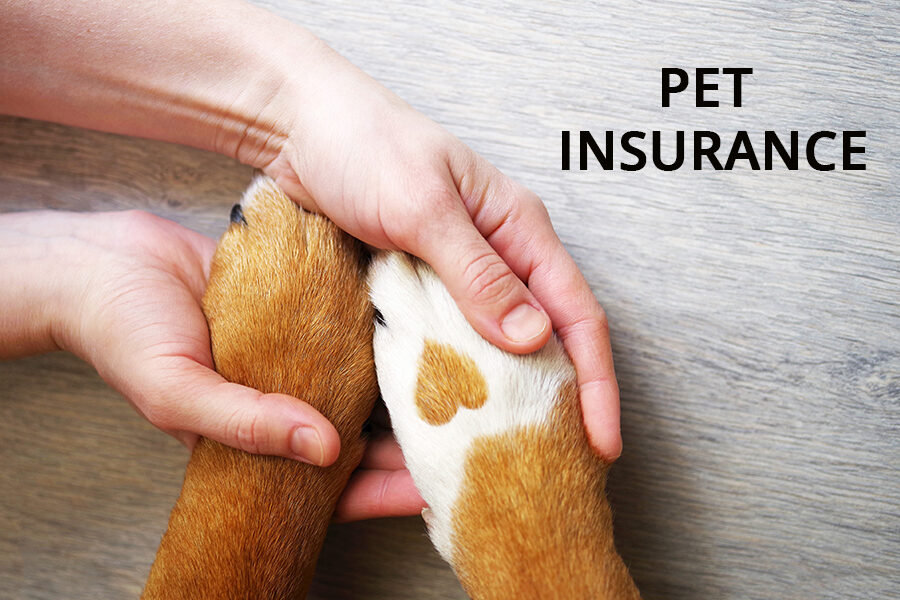






Owning a pet comes with immense joy, companionship, and responsibility. Just like humans, pets can experience unexpected accidents, illnesses, and medical emergencies that require immediate veterinary attention. Pet insurance ensures financial protection, allowing pet owners to provide the best medical care without the stress of overwhelming costs.
From routine check-ups to emergency surgeries, pet healthcare expenses can quickly add up. With the right pet insurance policy, pet owners can focus on their furry friend’s well-being rather than worrying about unexpected medical bills.

Pet insurance is a healthcare policy for pets that covers veterinary expenses due to illness, injury, or preventive care. Similar to human health insurance, pet owners pay a monthly or annual premium to ensure that medical costs are covered when needed.
Most pet insurance plans work on a reimbursement basis, meaning owners pay the vet bill upfront and then submit a claim for reimbursement. Depending on the plan, coverage may include:
Medical treatments for pets can be expensive, especially in emergencies. Pet insurance helps manage veterinary bills by covering a large portion of medical costs. Without insurance, pet owners may face difficult financial decisions that impact their pet’s health.
Veterinary medicine has advanced significantly, offering treatments like MRI scans, chemotherapy, and specialized surgeries. These treatments, while effective, can be costly. With pet insurance, owners can opt for the best medical solutions without financial constraints.

Owning a pet is a lifelong commitment, and unexpected health issues can arise at any time. Having pet insurance ensures that pet owners are prepared for unforeseen medical emergencies, reducing stress and financial burdens.
Many pets develop chronic conditions such as arthritis, diabetes, and heart disease, which require long-term treatments and medications. Pet insurance plans often include coverage for chronic illnesses, ensuring pets receive continuous care without excessive expenses.
Pet insurance policies come in various coverage levels and price ranges, allowing owners to select a plan that fits their budget and their pet’s needs. Options include:
Read more : Chew to a Healthier Smile: The Best Pet Toys for Dental Health!
A Happy Smile for Your Pet: The Ultimate Guide to Dental Care
Balanced Pet Diet: The Ultimate Guide to Furry Health
Pet Weight Management: Keeping Your Furry Friend Healthy and Happy
Pet owners can choose from different types of insurance plans based on their needs and budget. Understanding the available options helps in selecting the right coverage.
Designed for unexpected injuries, accident-only plans cover fractures, poisoning, burns, and trauma-related medical costs. These plans are generally more affordable but do not cover illnesses.
This comprehensive plan includes coverage for both accidents and common illnesses such as infections, digestive issues, and hereditary diseases. It is one of the most popular choices among pet owners.
For pet owners looking for all-inclusive coverage, this plan includes accidents, illnesses, and routine care like vaccinations, annual exams, dental cleanings, and flea treatments.
Some insurance companies offer lifetime policies that continue covering chronic illnesses throughout the pet’s life. These policies are ideal for pets with hereditary or long-term conditions like diabetes, hip dysplasia, or cancer.

When selecting a pet insurance policy, consider the following factors:
The cost of pet insurance depends on various factors, including:
On average, pet insurance premiums range between $20 to $50 per month for dogs and $10 to $30 per month for cats. While this may seem like an added expense, it significantly reduces unexpected veterinary costs in the long run.
While pet insurance provides extensive coverage, there are exclusions, such as:
Investing in pet insurance ensures financial security, better medical care, and peace of mind for pet owners. Whether facing emergency surgery, chronic illness, or routine check-ups, having an insurance policy in place can make a significant difference in your pet’s quality of life.
By choosing the right pet insurance plan, pet owners can provide the best possible care without financial strain. Protecting your pet’s health is an investment in their happiness, longevity, and well-being.
Pet insurance covers accidents, illnesses, surgeries, medications, and sometimes routine care, depending on the policy.
The cost varies but typically ranges from $20 to $50 for dogs and $10 to $30 for cats, based on coverage type and pet factors.
No, most pet insurance policies do not cover pre-existing conditions diagnosed before enrollment.
Yes, pet insurance helps reduce the financial burden of unexpected veterinary bills and ensures pets receive the best care.
Most pet insurance policies allow owners to visit any licensed veterinarian, as claims are reimbursed after treatment.




